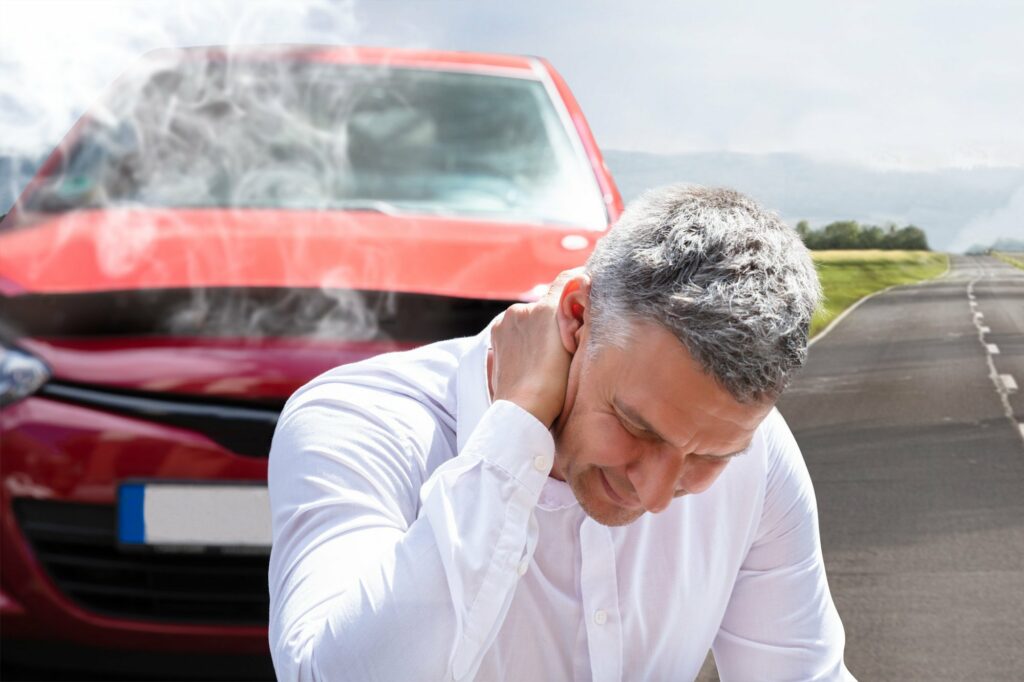Posted in Accident Data,Personal Injury on August 22, 2023
There is an average of six million car accidents in the US yearly. While all these vehicle accidents aren’t fatal, they’re abrupt, shocking experiences.
Sufferers often have various complications to deal with at once, like car damages car and auto accident injuries.
Injuries are especially problematic. It is never a good idea to wait until wounds get worse; trying to wait out injuries can prevent a safe recovery.
Putting off medical attention can also negatively impact a car accident lawsuit. But how long do you have to see a doctor after an auto accident?
The article below will tell you how fast you should seek medical care right after a vehicle collision, who pays compensation, and why getting medical attention is vital.
How Long Do You Have to See a Doctor After an Auto Accident?
When you should see a doctor after a collision depends on your home state. It’s best to seek medical no more than 24 hours after a car accident in Montana.
However, many insurance companies allow victims 72 hours to 14 days to seek care. This statute of limitations exists as a safety net for insurance providers.
Think of it this way – insurers want to be sure your injuries were from the accident before they issue a payout.
Seeing a doctor immediately after an accident assures them that injuries reported for insurance compensation came from said collision. Your claim can be denied if you wait too long outside what we’ll call the “golden duration.”
For example, it’s often advised you see your physician within 24 hours because some insurers try to deny claims after about a day. Many argue that injuries any later than this could be from other sources.
Florida falls under the 14-day golden duration rule. Picture this scenario: you wait 16 days after your accident to see your doctor because you still have back pains.
You decide to file a compensatory claim and find out it’s denied because the insurer asserts the injuries could have happened any time after the collision.
Note that this doesn’t mean you’ll automatically get denied, but waiting too long does increase the possibility.
Fault vs. No-Fault: What’s the Difference?
Whose insurance pays for your injuries depends on if you’re in a fault or no-fault state.
Montana is a fault state, which means the driver responsible for the accident may issue financial compensation. This payment includes funds for property damage and injuries suffered.
“Fault” doesn’t automatically mean the responsible driver’s insurance is the only source of payment, though. Drivers can file claims through their insurance if they have MedPay.
MedPay is non-mandatory insurance that pays all injured parties in an accident. The third option is to file an auto accident lawsuit against the driver at fault.
If there is more than one driver responsible, Montana splits the costs with a comparative negligence system. Comparative negligence declares each driver pays an amount equal to their percentage of fault.
Montana’s law also ensures a car wreck victim can only seek compensation if their percentage of responsibility is lower than the other involved parties.
This is called the 51% bar rule because the higher percentage of responsibility doesn’t need to be too much higher to prevent monetary recovery.
Let’s say there are two drivers, and both are at fault for a vehicle accident. One driver is 80% responsible, while the other is 20% at fault. The latter can seek compensation (reduced by 20%) from the former driver.
If a driver is more than 51% at fault, they won’t get restitution for the accident.
How Do No-Fault Laws Work?
A no-fault state (like Florida) makes launching a car accident lawsuit difficult. No-fault laws reduce or remove responsibility from all parties.
No-fault states require drivers to have personal injury protection (PIP). PIP covers medical fees, regardless of who caused the accident, up to the insurance limit.
PIP offers an immediate payout to everyone involved and helps keep smaller claim cases out of court. It’s not uncommon for accidents in no-fault states to avoid lawsuits altogether.
Although, there are cases where car accident lawsuits happen in no-fault states. A driver can still be found responsible; it’s just that PIP is a legal requirement and will pay faster than litigation.
For example, there are instances where PIP cannot fully cover medical care. In these cases, the victim can seek compensation from the driver responsible for the accident.
Why It’s Important to Seek Medical Care
Regardless of whose fault the accident is, you should still seek medical attention. One reason is that you are not a doctor. You know your body, but you may not be able to diagnose what’s wrong.
Here are a few injuries that often go hidden after vehicle collisions:
- Whiplash (neck strain)
- Back or spine injuries
- Concussion
- Soft tissue injuries
- Injuries to ligaments, muscles, and tendons
- Internal injuries
- Such as ruptured spleens and broken ribs
It’s never a good idea to assume you can spot these complications better than a trained medical official. Ignoring injuries can lead to chronic health issues or even death.
The second reason to seek professional medical assistance is to have insurance against the insurers. Earlier, it was mentioned that many companies try to deny claims.
Having doctor’s records recording why you’re there and what you’re injuries are invaluable for claims and lawsuits. They’re proof that you got medical care and that the accident was the direct cause of your wounds.
The records are backup, so an insurance adjuster can’t easily intimidate you into dropping your claim or settling for lesser compensation.
Consult a Lawyer on Your Auto Accident
How long do you have to see a doctor after an auto accident? Ideally, don’t wait longer than 24 hours, but some insurance companies give you 72 hours to 14 days to seek medical attention.
It’s easier to tackle your car accident lawsuit or insurance claim with a medical record. The insurers will have trouble disproving your injuries, and you’re much quicker to recover.
Heenan & Cook are here if you’re adrift after your auto accident. Our law firm will provide helpful and reliable counsel during your time of need. Contact us for a free case evaluation today.



